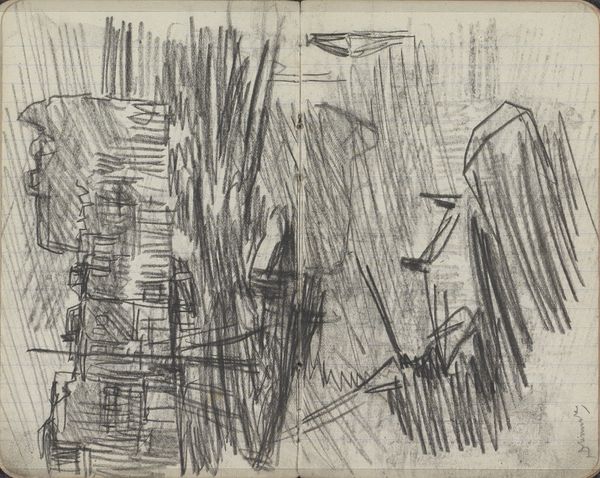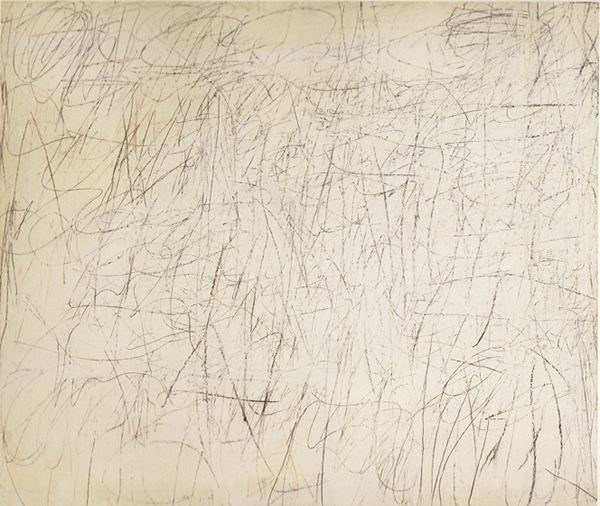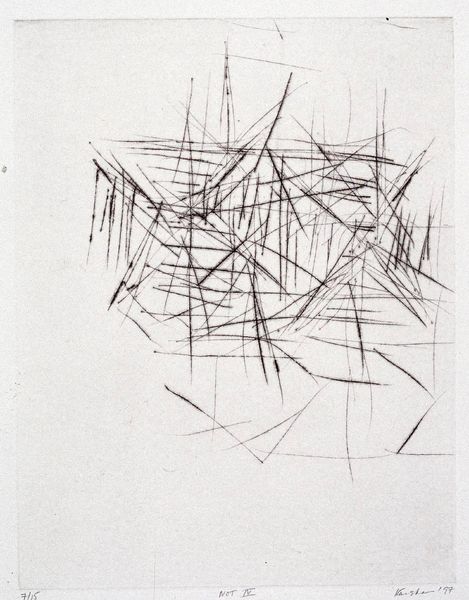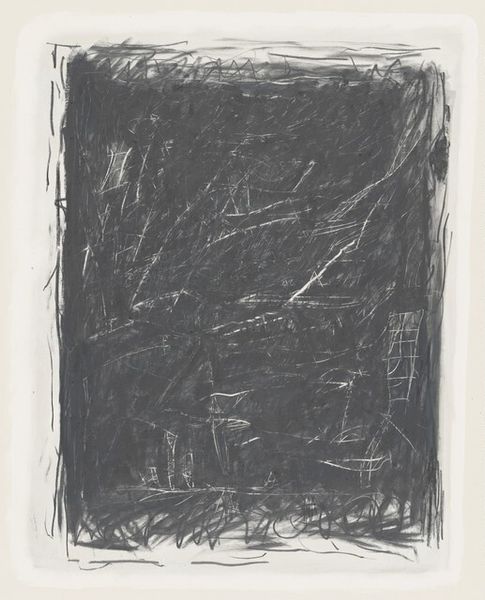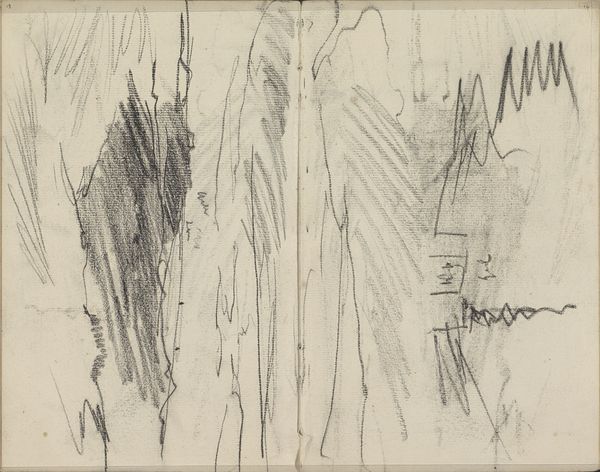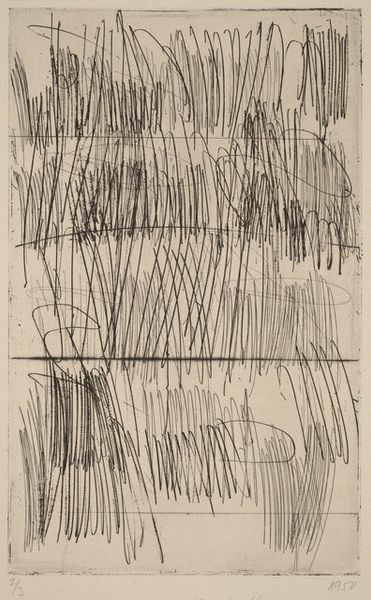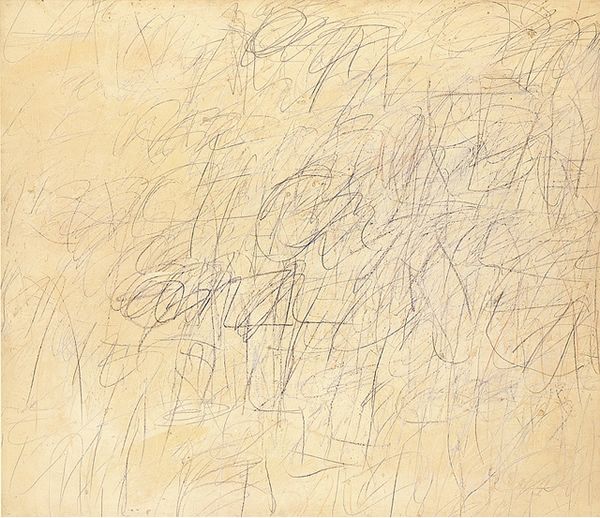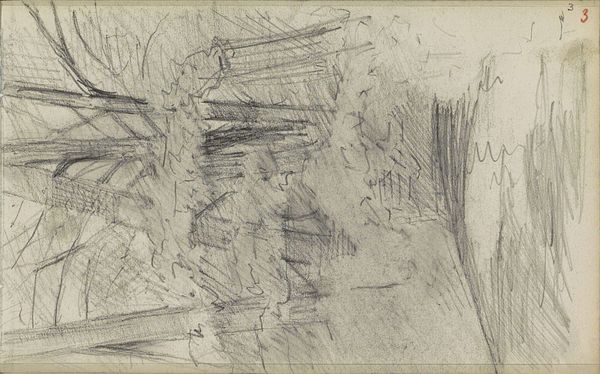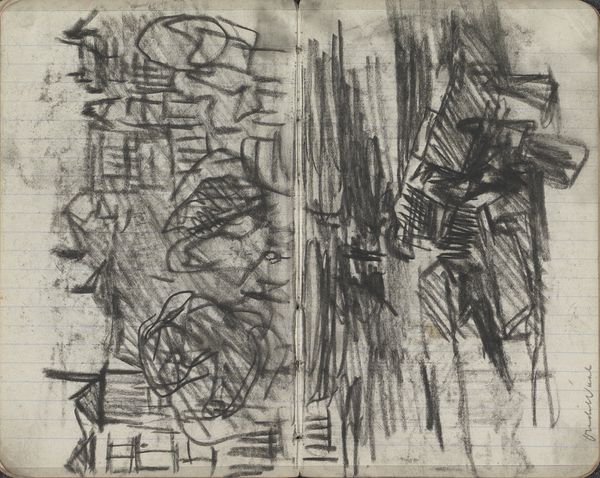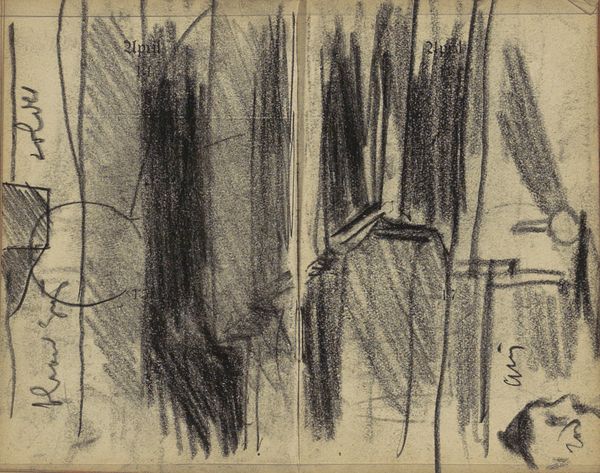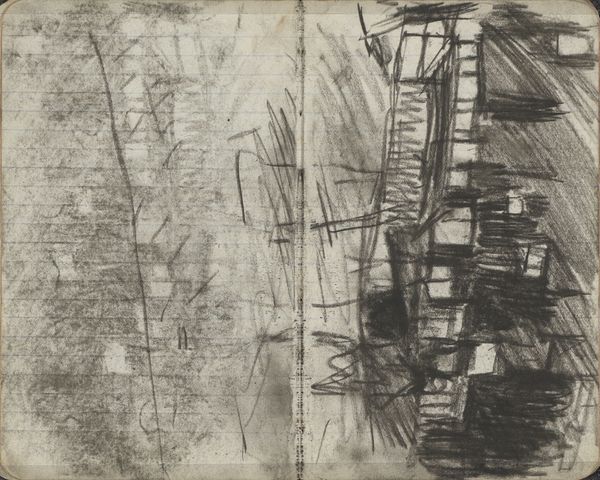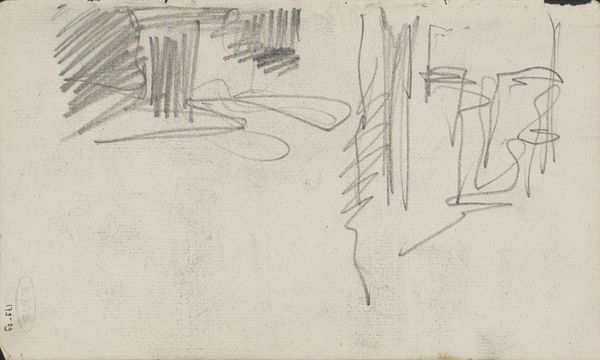
Copyright: Rijks Museum: Open Domain
Curator: Let’s take a closer look at "Boten aan het Damrak te Amsterdam" – or "Boats on the Damrak in Amsterdam". It’s a drawing by George Hendrik Breitner, dating from around 1890 to 1900. You can find this piece within the Rijksmuseum's collection. Editor: My immediate impression is organized chaos! There’s a frenzy of lines suggesting forms without fully defining them. It gives a sense of the hustle and bustle, like a fleeting moment captured in graphite. Curator: Absolutely. Breitner was fascinated by capturing the dynamism of Amsterdam's city life. This drawing offers insight into the rapid industrialization of the period and the social transformations occurring within the city. Editor: I am really struck by the choice of material – what appears to be graphite or perhaps even charcoal on paper, taken straight from a sketchbook. It points to an intimate and immediate engagement with the subject, very different from, say, a formal oil painting of the same scene. One almost sees him making these marks, the quick, repeated lines... Curator: Precisely. His work, heavily influenced by Impressionism, challenges academic artistic practices. He depicted ordinary life as an agent in democratizing artistic subjects – documenting laborers and working-class communities previously considered unworthy for the higher art world. This piece mirrors the rapid social changes witnessed through growing capitalist structures. Editor: The incomplete nature of the sketch also emphasizes the raw materials – the grain of the paper showing through, the smudges from the artist's hand… all these things that a finished piece would usually eliminate become central to the aesthetic experience here. You sense Breitner’s labor, the very physical act of sketching, is right here in front of you. Curator: And in doing so, he documents not just the city itself, but the experience of inhabiting it in this era of profound urban growth and social complexity. Editor: It definitely leaves you wondering what became of the boats and the hands that might have built or sailed them. Thanks to Breitner’s technique and the materiality of the piece, that feels really poignant. Curator: I agree. It's fascinating how a simple sketch can unlock a broader understanding of the city’s transformation, through both aesthetic form and evolving social relations.
Comments
No comments
Be the first to comment and join the conversation on the ultimate creative platform.

